Back in 2013 something amazing happened to me, I managed to cure something in myself that was thought to be incurable. Ever since I’ve been striving for an understanding of how that happened so it could be applied to all kinds of situations. I was introduced to the 7 Systems of Health by an inspirational teacher, Dr Deanna Minich. Each system correlates to an endocrine gland, specific parts of the anatomy, physiological activities and certain foods. The absolute beauty of this system to me was the link to colour, which had been integral in my own healing, and it was my interest in frequency – both colour and sound – that originally drew me to Deanna’s work. I am also a fan of Nikola Tesla’s work and believe that everything is frequency. Part of this frequency spectrum is the visible light in which we find all the colours of the rainbow from lower frequency red at wavelengths around 700nm to higher frequency violet at around 400nm.
In the late 1600s Isaac Newton used a prism to separate sunlight into the seven spectral colours that we know of as the rainbow and these fit within visible light between infrared and ultraviolet. Back then the colour blue related more to a lighter sky blue, so I will use turquoise here as this is closer to the spectral colour Newton referred to.
I got immersed in colour for some time and especially the natural colour pigments in foods that interact with our body on this level of frequency. But frequency expresses in both colour and sound, so what about sound? If we are light, then we are music also.
The 7 Systems, each correlating to a colour of the rainbow always felt to me like the 7 notes on the piano. These 7 notes make up what is known as the diatonic scale, and these correspond to the colours of the rainbow starting from middle C. In Eastern traditions these colours are also linked to chakras and energy centres of the body.
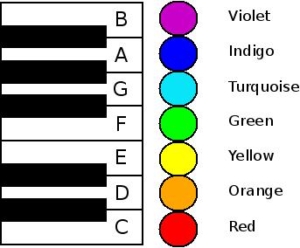
When playing a scale on the piano it is normal to include the octave, in this case top C, which I’m going to represent with the colour white, as this top note is needed to feel complete, in the same way that white light is the complete whole of the the 7 separate colours of the rainbow. The top C is the completion of the octave, the beginning and the end, the alpha and omega. I see this as the point that completes us at the end and also connects us back to the beginning. As above, so below in Hermetic tradition.
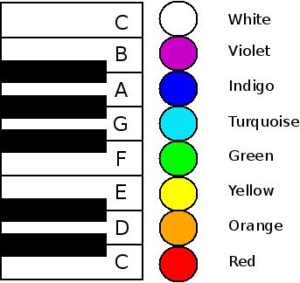
As you can see, together with the 7 white notes are 5 black notes and when you have the full complement of notes more beautiful and complex harmonies can be created. By bringing in those extra 5 notes, it really opens up the possibilities for us a beings of frequency.
Adding in these black notes turns the diatonic scale into a chromatic scale in musical terms. And I really like the way this can be represented in colour when the word ‘chromatic’ means colour.
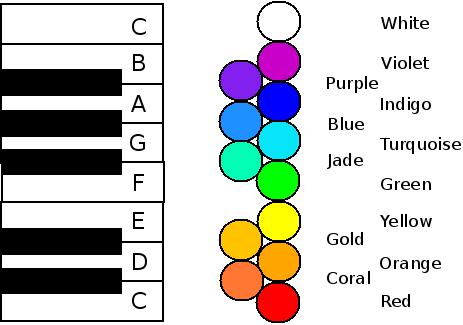
In the 7 Systems model and also in Ayurveda the 7 original colours are linked to endocrine glands, so the first thing I did was look to see if there are 5 additional endocrine glands and see how they would fit within this chromatic model.
The original 7 Endocrine Glands
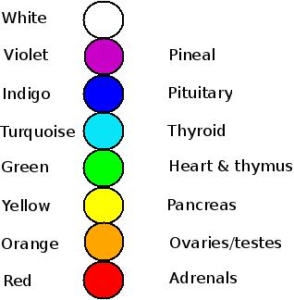
Hypothalamus
Above the pituitary gland we find the hypothalamus, which plays a significant role in overseeing the endocrine system and is also the link to the nervous system. The hypothalamus is a part of the limbic system of the brain that also includes the amygdala (the emotion centre) and the hippocampus, which is important in memory. It lies slightly below the pineal gland so hits the note of B flat on the musical scale and the colour purple. Having three systems located in the brain also demonstrates the huge importance of brain health. The lower parts of the brain such as the brainstem which controls many vital body functions, the midbrain that controls vision and eye movement would stay with the pituitary system and the limbic system becomes connected in with the hypothalamus.
Parotid gland
Above the thyroid and below the brain we have the important area of the mouth and the glands in the mouth and throat. As well as the well-known exocrine function of producing saliva, the parotid gland also has an endocrine function and secretes the hormone parotin. The mouth is such an important area of health given the impact infection in the mouth and jaw can have on health, making it helpful to separate this out from the thyroid system, which is also huge in it’s own right. Since the discovery of the lymphatic system of the brain there has been more focus on the importance of drainage of toxic brain metabolites via the cervical lymph nodes in the neck and the potential blocking of this pathway by infections in the mouth, tonsillar tissue and cavitation of the jaw. With the rise of brain diseases this has become a key area of focus and so feels right to be a system of it’s own.
Thymus gland
The thymus gland sits behind the sternum below the thyroid and between the lungs. It supports the lymphatic system and supports immune response. The thymus is often connected in with the heart, although the heart was elevated to have an endocrine status of it’s own also, so it seems fitting that these could be systems in their own right. The thymus is positioned between the thyroid and the heart so will take the place of F sharp and the colour Jade. In the newer 13 chakra systems that have popped up in recent years, the thymus is known as the higher heart chakra. This area is also known as the emotional heart or heart protector and believed to hold a record of traumatic and painful events. The thymus is close to the sternum, which acts as a sound board and amplifier of acoustic vibrations, which could make the thymus an interesting system in terms of sound.
Microbiome
The microbiome is now accepted as an organ within us and it’s endocrine function has been described in the scientific literature. Given the 8 million genes the microbiome contributes to us as a whole, it’s importance is significant. To put into perspective, our human genome contains only 22,000 genes. Even though the microbiome is contained mostly within the gut and is closely integrated with our digestive system, it is still separate in many ways, most obviously by it’s non-human structure, and so works well as a separate system. Half way between yellow and orange this system takes the colour gold, which is symbolic of riches and wealth, and the microbiome when healthy, certainly rewards us with the riches of health.
Bone
It was interesting to read the paper ‘Bone as an endocrine organ’ and find a unique place for this structural part of us and with it a key component of health – minerals. In my clinical practice I’ve found heavy metals to be at the root of so many problems and these accumulate in part due to mineral deficiencies. Both the adrenals and the skeleton, which were combined in the red-coloured system, are massive areas and hold strong as systems of their own. Given that our skeleton is the foundation of our body, it felt right for it to be below the adrenals, which is a root force of our survival. So I have placed the adrenals with the note C sharp on the scale and the colour coral, half way between red and orange. Interestingly, in some sects of Hinduism, coral instead of red is shown as being the colour that represents the first muladhara chakra in Hindu philosophy. While red, the colour associated with blood fits well with the bone system as red blood cells are made in the bone marrow. There is another reason to order these in this way as will become apparent below.
So let’s see how these 12 endocrine systems looks in the diagram:
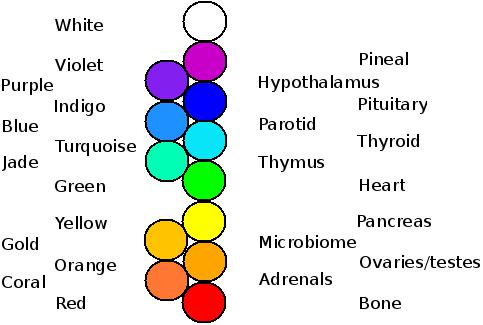
Now, for the fun part.
Let’s arrange these colours in the form of a colour wheel and I’ll show you something that I think is really interesting. In colour there is a concept called complementary opposites, where the colours opposite on the colour wheel complement each other. Let’s now look at how this works in terms of the 12 systems.
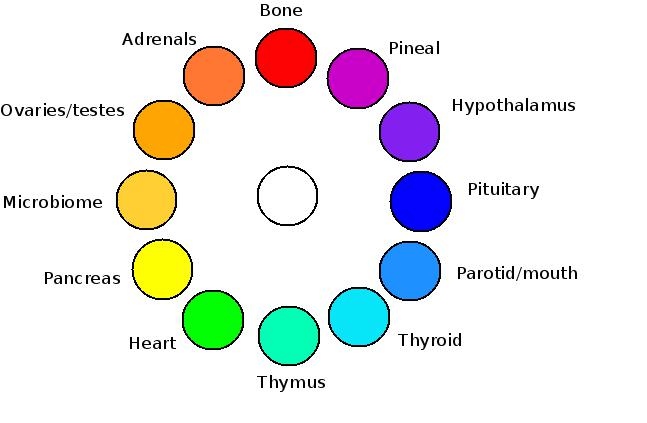
Bone-thymus
These two systems complement each other in terms of our immune function. Immune cells are made in the bone marrow and educated in the thymus. Our immune system is part of our foundation as it enables us to survive along with the foundation provided by our skeleton. Additionally, while the skeleton grows as we grow up the thymus shrinks, being at it’s largest in infancy and childhood.
Adrenal-thyroid
Here are two systems that are connected in regulating our energy and metabolism. When our adrenals are stressed and overworked the thyroid steps in to slow down metabolism to conserve vital energy. There is a strong connection also in terms of weight management and fatigue when this pair become dysfunctional.
Gonads-parotid
The connection here is more than just the exchange of bodily fluids from both systems in physical relationships, but also some research done back in the 70s in Osaka University showed a relationship between the salivary hormone parotin and the weight of the testes, the volume and components of semen, and also levels of oestrogen. There’s not much research on this, but the connection is intriguing and there’s possibly more to uncover here.
Microbiome-pituitary
There is no doubt about the connection between the microbiome and the brain. The microbiome itself has been referred to as the third brain and it interacts with the second brain (the enteric nervous system) to connect with the brain in our head via the vagus nerve to influence behaviour and moods. Read more about this here.
Pancreas-Hypothalamus
Balance is a key theme here. The hypothalamus is involved in maintaining homeostasis in the body and the pancreas regulates blood sugar balance through excretion of the hormones insulin and glucagon. Another theme with this pair is thoughts. The hypothalamus is a part of the limbic system which is involved in learning and memory, and receives information from the nervous system. The pancreas is a part of the system that includes the digestive organs of the stomach, small intestine and this digestive tract includes the Enteric Nervous System which is a brain in itself. There is also research demonstrating the role of the hypothalamus in the development of diabetes and metabolic syndrome.
Heart-Pineal
This pairing is all about connection and compassion. Connection through the heart and love for others, and connection to higher levels of consciousness and a universal love via the pineal. There is also a strong connection in the scientific literature between melatonin, secreted by the pineal gland, having a protective effect against cardiovascular disease.
Now, what if we then take these connections one step further and connect together the complementary pairs that form a cross in the colour wheel?
Bone-microbiome-thymus-pituitary
This grouping represents the physical body, our ability to exist in the physical world and the basic functions of life. The foundation of our physical presence in the skeleton, the foundation of our ability to exist in this world due to our immune system which encompasses the bone marrow, thymus and has a large input from the microbiome. The foundation of our survival behaviour in the brainstem which oversees basic life functions such as breathing, heart rate, temperature regulation and body movement.
Adrenal-Pancreas-Thyroid-Hypothalamus
This group is all about energy, stress, balance, thoughts and the mind. The pancreas system includes the liver which is a key organ in energy metabolism. The pancreas itself helps create cellular energy by producing insulin to escort glucose into cells for fuel. The adrenals and thyroid help regulate the energy we make in response to our environment helping us to mind our energy reserves. The digestive system, which is part of the pancreas system, includes the second brain, which has a mind of it’s own and plays a role in our mood and behaviour. Within the thyroid system lies the voice box in the neck and this allows us to speak our mind and express our thoughts verbally.
Whereas the previous group of systems gives us form and presence in the world, it is these four which animate us with life-force and energy, and fuel us through the transformation of food into energy in the digestive system.
Ovaries/testes-Heart-Parotid-Pineal
Without doubt the theme here is the spirit of love: relationships, romance, passion, connection and bonding. Love for an individual through the heart, love for a romantic partner through the sex organs and kissing via the mouth, and also universal love for something bigger via a spiritual connection through the pineal gland. When we connect to our spirit we become more heart-centered. Also rhythms and cycles are represented here with the monthly cycles of the ovaries/menstrual cycle and the day/night cycles of the pineal; the cycle of life from reproduction and creation in the womb to the process of moving to the next world through the journey of the soul seated in the pineal. There’s also an interesting connection between the pineal hormone melatonin and reproductive health and sex hormones, with healthy melatonin levels being linked to onset of puberty, being beneficial for successful fertility and reproduction and being supplemented during IVF treatment for more positive outcomes.
What we have here with these three groups is Body, Mind and Spirit, and together they make us complete, which is represented by the colour white and the top octave note. For me personally I have a grouping of four systems in the Ovaries-Heart-Parotid-Pineal that help explain the miraculous healing I experienced. This hopefully brings me closer to a better understanding of how to apply my journey to others.

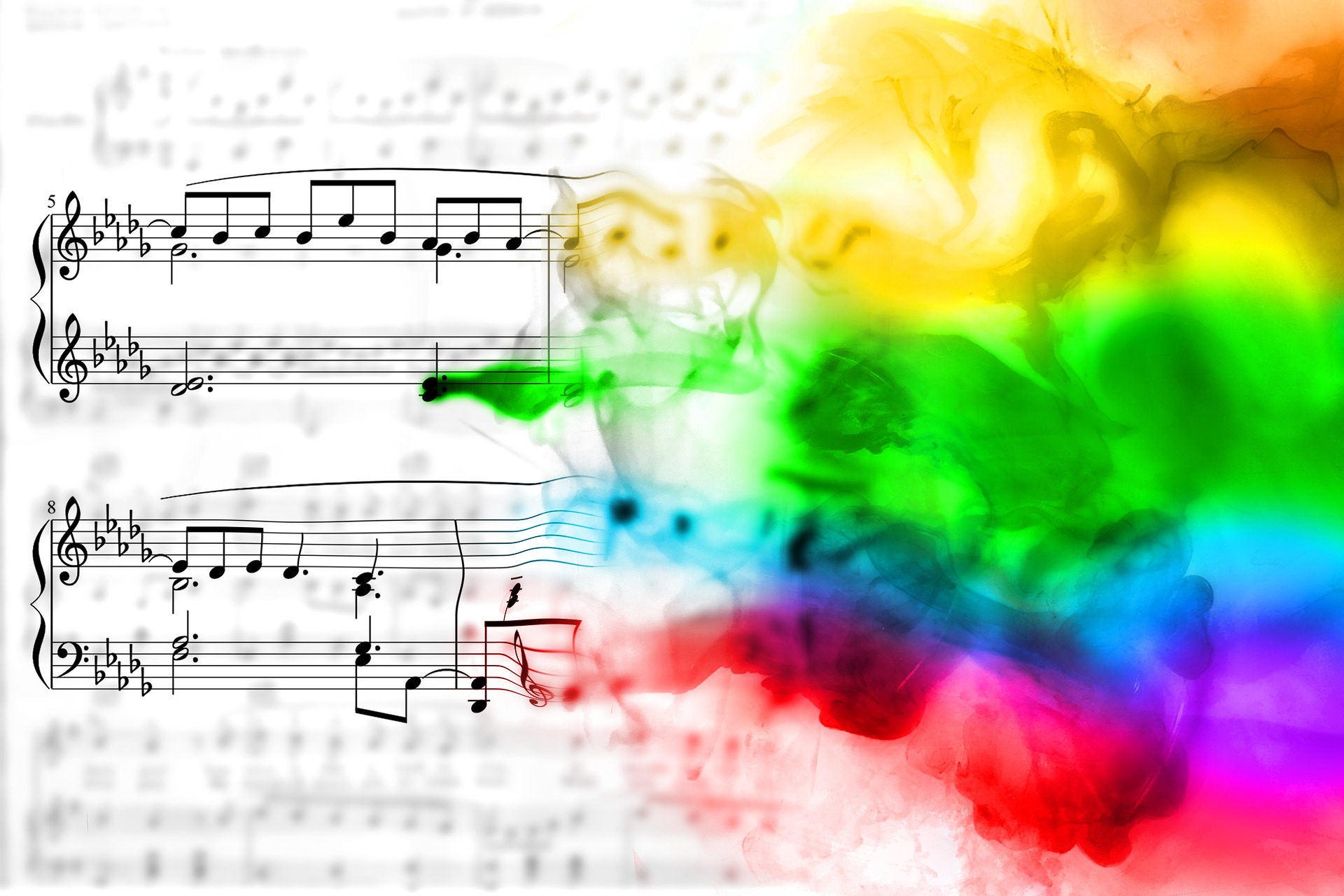
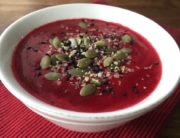
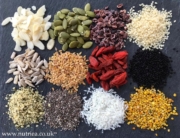



Leave A Comment